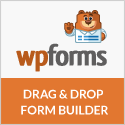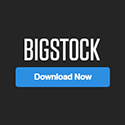Return item chargebacks, sometimes falsely equated with actual chargebacks, are fees that a bank charges a customer who deposits a check that bounces due to insufficient funds in the check writer’s account. It’s a term that can confuse, given each bank may label the fee differently, such as “Deposited Item Returned Fee,” “Returned Check Fee,” or “Cashed/Deposited Item Returned Unpaid Fee.” These fees are separate from the chargeback process associated with credit card disputes, which involves a cardholder initiating a claim due to fraud or dissatisfaction with a transaction. As the use of checks diminishes, so should concern over return item chargebacks. However, understanding them remains important for clear communication with customers and bank representatives.
Various banks have their own specific fees, ranging from $9 to $19 for these returned items, emphasizing a lack of standard terminology that contributes to customer confusion and potential business implications. In this article, we will demystify return item chargebacks, their differences from other banking fees, and strategies for avoiding them, ensuring you maintain transparent banking interactions and protect your interests.
Demystifying Return Item Chargebacks
Return item chargebacks are distinct from other banking fees such as overdraft or non-sufficient funds (NSF) fees, which target the issuer of a dishonored check. Unlike an attempted chargeback with credit cards, return item chargebacks don’t involve disputes over services or products. Rather, they result from a failed check deposit where the depositor bears the resulting fee.
These fees typically range from $10 to $40 depending on whether the checks are domestic or foreign. Banks justify these costs as a means to cover processing expenses on bad checks which are unlikely to be recovered from the check issuer. For clarity, return item chargebacks should not be confused with refunds, as the latter implies a voluntary return of funds by a merchant, while the former is a fee imposed by the bank.
“Return item chargebacks are distinct from other banking fees such as overdraft or non-sufficient funds (NSF) fees.”
| Type of Fee | Description |
|---|---|
| Overdraft Fee | A fee charged when a customer’s account balance goes below zero. |
| Non-sufficient Funds (NSF) Fee | A fee imposed on the issuer of a dishonored check when there are insufficient funds in their account. |
| Return Item Chargeback Fee | A fee levied on the depositor of a failed check deposit, regardless of the cause for the check’s dishonor. |
To help mitigate confusion over return item chargebacks, it’s crucial to educate yourself on the differences between these fees and other charges. Understanding how each fee works and the specific circumstances under which they are applied can help you better communicate with your bank and avoid unnecessary costs.
Strategies for Avoiding Return Item Chargeback Fees
To reduce the likelihood of incurring return item chargeback fees, merchants can implement effective payment verification policies. This involves taking proactive steps to validate checks prior to deposit, thereby minimizing the potential of accepting bad checks. Although it may seem intrusive, some banks suggest verifying with the check writer that funds are available before deposit. Practicing “good funds” practices and staying vigilant when accepting checks as payment can greatly diminish the chances of associated fees.
Implementing Effective Payment Verification Policies
Here are some steps merchants can take to implement effective payment verification policies:
- Verify that the check was written by a trusted source or customer.
- Confirm that the check writer’s account has sufficient funds available to cover the check amount.
- Consider using a check verification service to assist in confirming the legitimacy and validity of the check.
- Exercise caution when accepting checks from international customers, as they can be more difficult to verify.
Enhancing Customer Communication and Support
Clear communication and prompt customer support are essential in preventing return item chargebacks. Merchants should use transparent billing descriptors that match their business name to avoid confusion on bank statements. Providing customers with a generous and clearly stated return policy, as well as quick customer service responses, can prevent misunderstandings that lead to check bounces and ultimately return item chargeback fees.
Utilizing Banking Technology to Detect and Prevent Errors
Advancements in banking technology can assist merchants in preventing the errors that result in return item chargebacks. Mechanisms like electronic check verification and automated fraud detection services can preemptively identify potential issues with checks or transactions. Some payment processors also offer seller protection services that include protocols to deter and manage transactional disputes efficiently, thus protecting the merchant’s revenue against return item chargebacks.
“Utilizing technology such as electronic check verification and automated fraud detection services can decrease the likelihood of return item chargebacks.”
Conclusion
In conclusion, the key to addressing return item chargebacks lies in understanding the distinction between various banking fees and ensuring a clear communication flow with customers to avoid any potential confusion. Strategies to avoid these fees include reinforcing effective payment validation, offering exceptional customer support, and leveraging banking technology to minimize errors.
Although return item chargebacks may appear daunting, a combination of awareness, preventive measures, and a proactive approach can help you navigate these fees effectively. As the banking landscape evolves and moves away from traditional check payments, mastering these strategies will empower merchants to safeguard their interests and maintain transparent banking interactions.
By implementing the best practices outlined in this article, you can reduce the likelihood of return item chargebacks, enhance your customer service, and ultimately strengthen your financial standing. Stay informed about banking processes and be proactive in your approach to minimize the risk of encountering return item chargeback fees, ensuring a smooth and transparent financial experience for both you and your customers.
FAQ
What is a return item chargeback?
A return item chargeback is a fee charged by a bank to a customer who deposits a check that bounces due to insufficient funds in the check writer’s account. The term can be confusing, as each bank may label the fee differently, such as “Deposited Item Returned Fee,” “Returned Check Fee,” or “Cashed/Deposited Item Returned Unpaid Fee.”
How is a return item chargeback different from a standard chargeback?
Return item chargebacks are fees associated with bounced checks, while standard chargebacks involve a credit cardholder initiating a dispute due to fraud or dissatisfaction with a transaction. Return item chargebacks do not involve disputes over services or products and are unrelated to issues associated with credit card transactions.
How can I avoid return item chargeback fees?
To avoid return item chargeback fees, implement effective payment verification policies to validate checks before depositing them, practice “good funds” practices, and utilize banking technology to detect and prevent errors. Furthermore, enhance customer communication and support to prevent misunderstandings that could lead to bounced checks and return item chargeback fees.
Are return item chargebacks the same as Non-Sufficient Funds (NSF) fees?
No, return item chargebacks and NSF fees are different. Return item chargebacks are fees imposed on the depositor of a bounced check, while NSF fees target the issuer of the dishonored check. Return item chargebacks focus on the processing expenses for bad checks, whereas NSF fees pertain to the check writer’s insufficient funds.
How can I better communicate with customers regarding return item chargebacks?
To improve communication with customers about return item chargebacks, use transparent billing descriptors matching your business name, provide a clear and generous return policy, and offer swift customer service responses to address any potential issues or misunderstandings that may lead to check bounces and return item chargeback fees.








Comments (0)